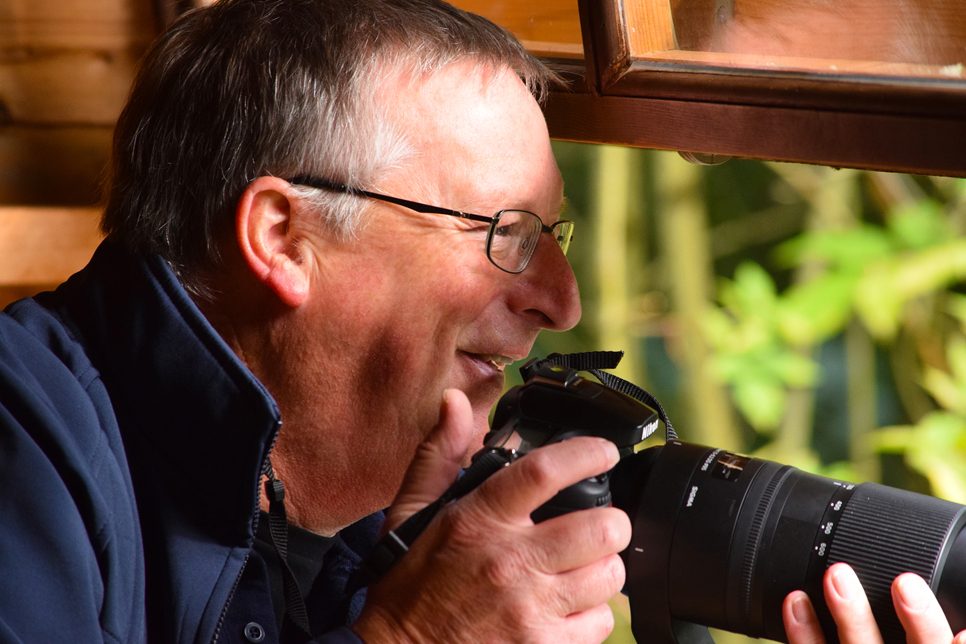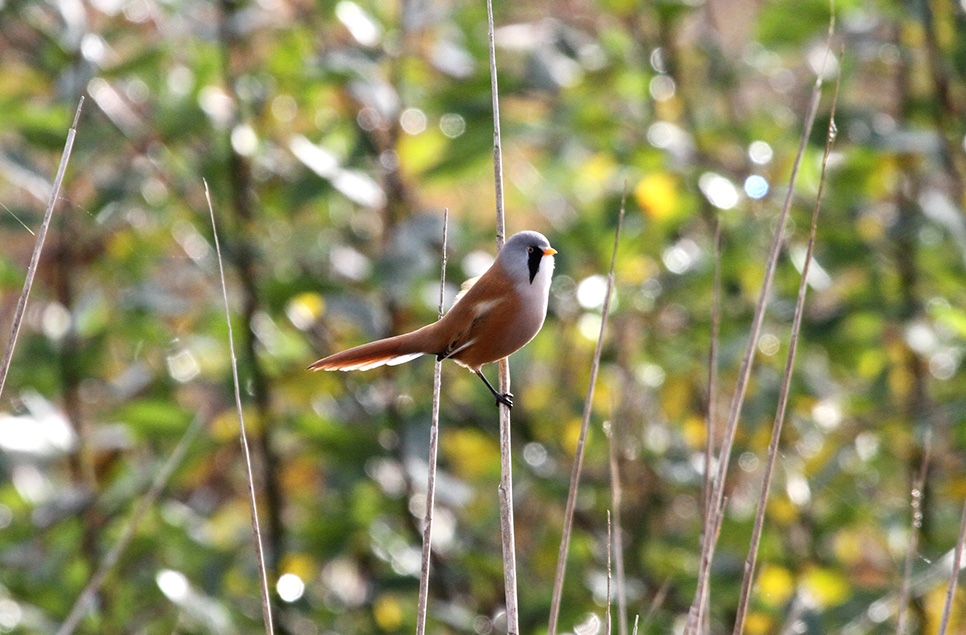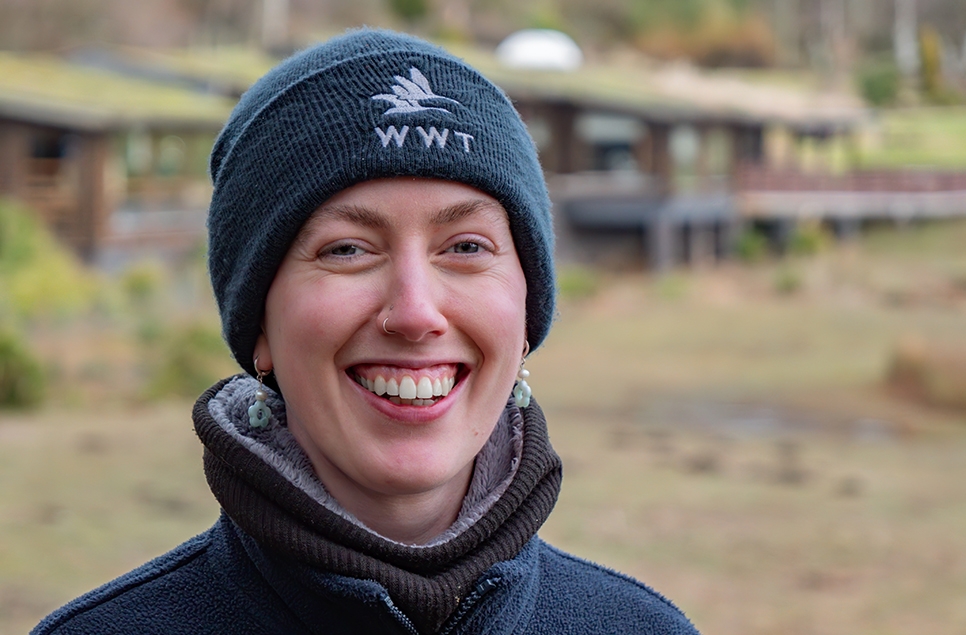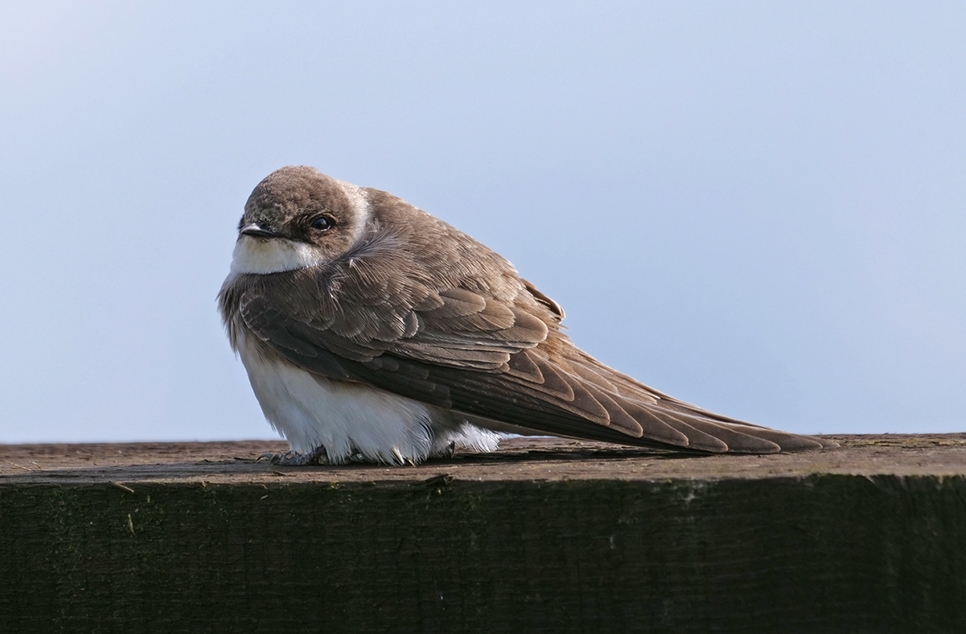The first sand martin chicks have been spotted
Sand martin chicks are spotted for the first time ever at WWT Washington.
The first ever sand martin chicks have been spotted on site at WWT Washington just months after the birds first arrived here.
Arriving for the season in late March, adult sand martins were quick to find and show interest in the artificial nesting bank – which was built only 8 months earlier in October last year (2023).
Now, just a couple of months later, WWT Washington volunteer Adi Benson caught the first glimpse of a wide-mouthed sand martin chick in the opening of one of the nest chambers (pictured above).
Reserve Manager John Gowland said:
“There were lots of positive signs early on, with nesting material such as grass and feathers seen being taken into the nesting chambers of the artificial bank– all good signs of the birds beginning to settle and breed.
Since the first chick was spotted, we’ve spent some time observing the bank to look for more and are thrilled to have seen at least eight chicks at different openings, which is great to see!”
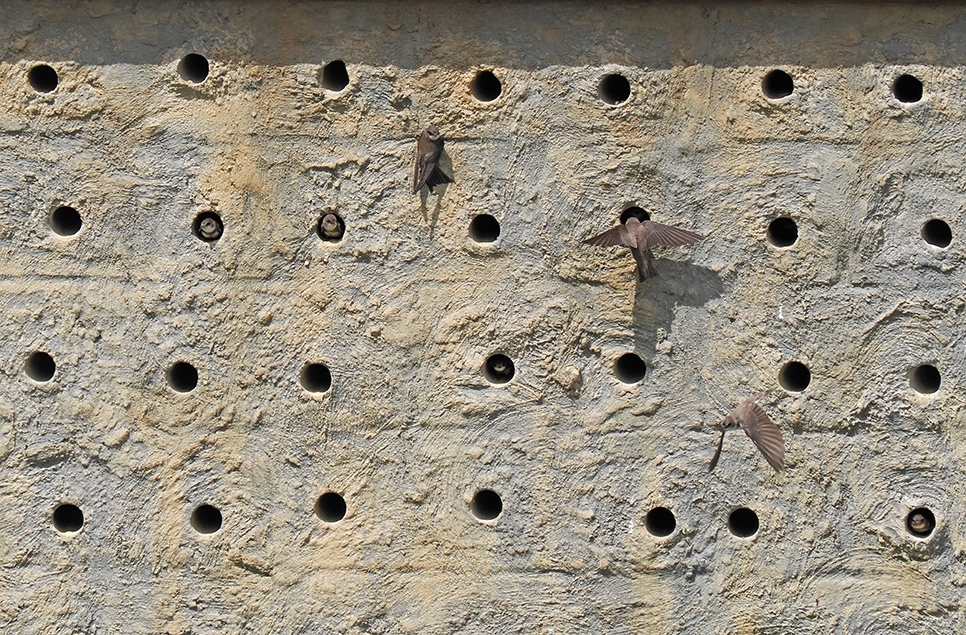
Sand martin chicks spotted in various nest chamber openings © Christopher Bill
Sand martin typically lay 4-5 eggs in late May - early June, taking around 2 weeks to incubate and hatch.
Both sand martin parents will regularly feed the growing chicks, enjoying a diet of tiny insects. During the later stages of their development, they’ll make their way to the opening of the chambers getting ready to take their first flight.
If the conditions are right, sand martin will usually have two broods each year, so the chances are they will begin the process again once the first chicks leave the nest.
John commented:
“If they manage to successfully raise two broods of young, that will mean around 60-70 young birds potentially fledging from just 8 breeding pairs. But the even more exciting news is that at least 16 other nest chambers look like they’re active, with adult sand martins regular entering and exiting the chambers.
This is looking to be a great success for our first ever sand martin breeding season and a huge boost to numbers for this bird species. We can’t wait to see what the rest of the season brings!”
Sand martins (Riparia riparia) – the smallest of the European hirundine family, which includes swallows and house martins – typically hunt and feed over the site’s Wader Lake.
The sand martin bank is part of on-going habitat management around Wader Lake, which over the last 3 years has already benefitted from desilting work, deepened water channels and more effective vegetation management.
This work is already showing improvements for a variety of wildlife, whilst creating a more enhanced wildlife viewing experience for visitors to enjoy while here at WWT Washington.
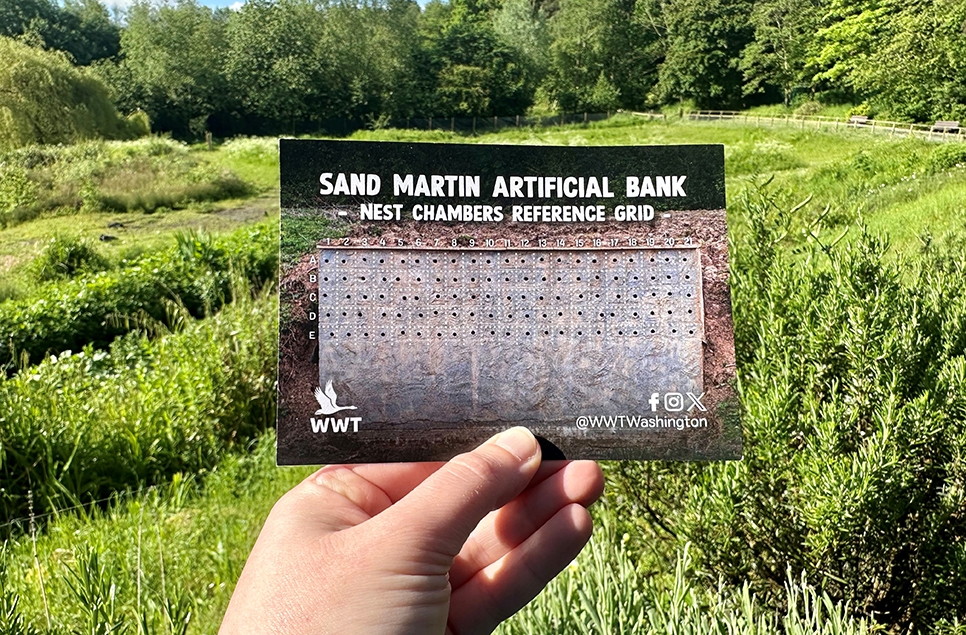
Sand martin citizen survey
WWT Washington is now asking visitors to help be their eyes and ears throughout the day to track the movement of sand martin around the artificial bank.
The aim of the survey is to help us monitor sand martin activity and build a picture of the number of migrating birds going in and out of the chambers and if so, which ones they’re using by completing a reference grid.
Survey cards can be found inside the Vic Robins hide on Wader Lake where visitors have the perfect viewing point of the new bank and the nesting sand martin.
Ready to visit?
If you've been inspired to explore Washington Wetland Centre, find out more and plan your visit online.
Plan your visit